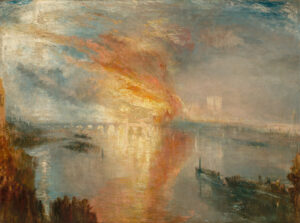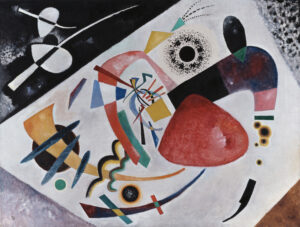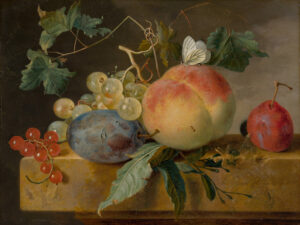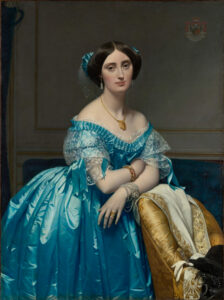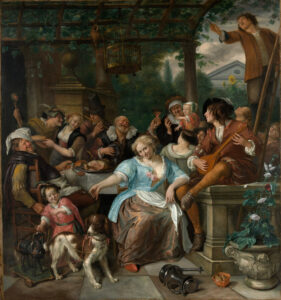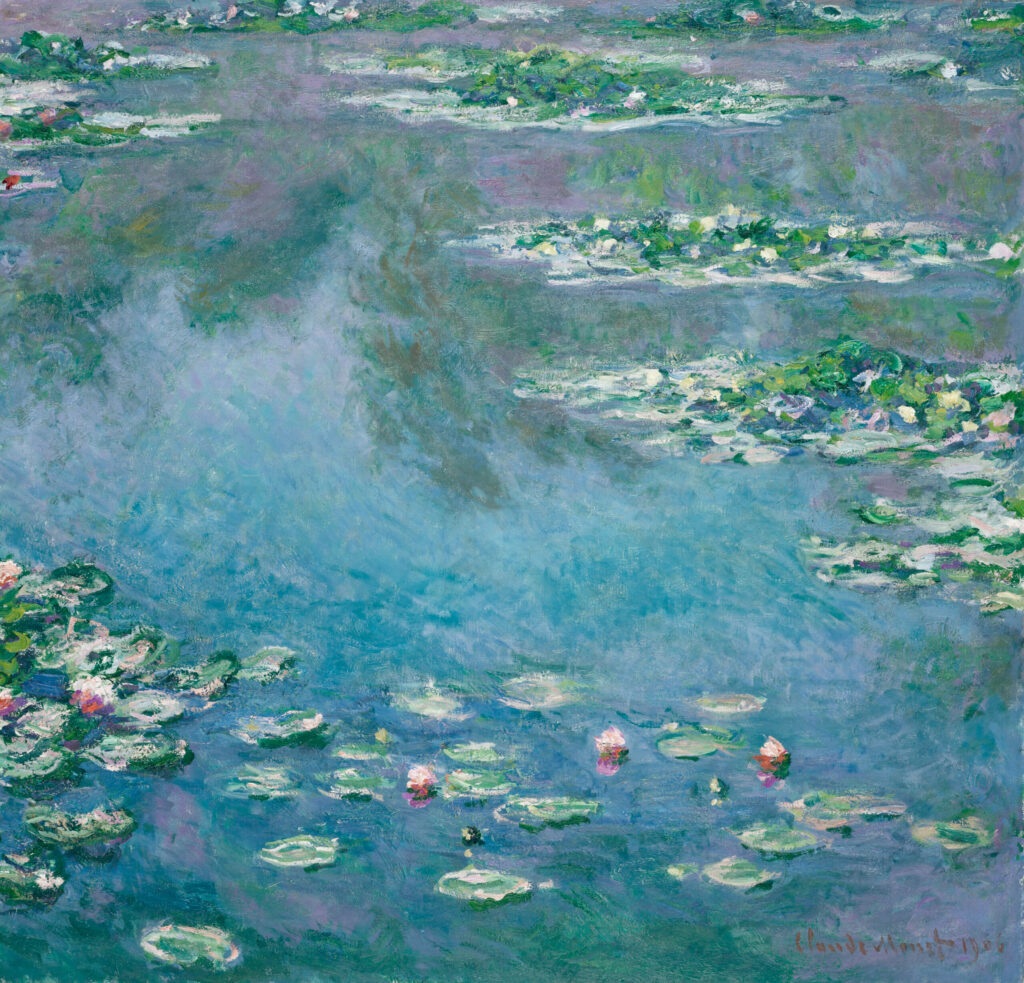
Claude Monet’s Water Lilies perfectly illustrate the revolutionary evolution of modern art toward abstraction.
Painted in 1906, this work belongs to the third series devoted to the obsessional motif of the Giverny pond. Monet abandons here all reference to the conventional horizon to focus exclusively on the water’s surface, creating an ambiguous pictorial space where reality and reflections intermingle. The Impressionist technique reaches its maturity: rapid and free brushstrokes, colored impastos, subtle interplay between the blue-green tones of the water and the delicate pinks of the flowers. The floating water lilies structure the composition, while reflections of sky and vegetation dissolve into an increasingly autonomous pictorial matter. The work captures “an instant, an aspect of nature” according to the master’s words, but transcends simple observation to achieve a true meditation on light, color, and perception.
To Learn More
- Water Lilies, 1906, by Claude Monet
- 89.9 × 94.1 cm (35 3/8 × 37 1/16 in.)
- The Art Institute of Chicago – European Painting and Sculpture
- https://www.artic.edu/artworks/16568/water-lilies
Claude Monet (1840-1926), emblematic figure of French Impressionism, revolutionized Western art by privileging color sensation over academic drawing. Born in Le Havre, he developed an early passion for plein air painting, settling permanently in Giverny in 1883 where he designed his famous water gardens. A pioneer of pictorial modernity, he tirelessly explored luminous variations on the same motif in his series of Cathedrals, Haystacks, and Poplars. His final decades were entirely devoted to the Water Lilies, the culmination of an aesthetic research that profoundly influenced contemporary art. Despite progressive blindness, he continued his work with undiminished creative energy, bequeathing to posterity a monumental ensemble, the artistic testament of a visionary genius.

